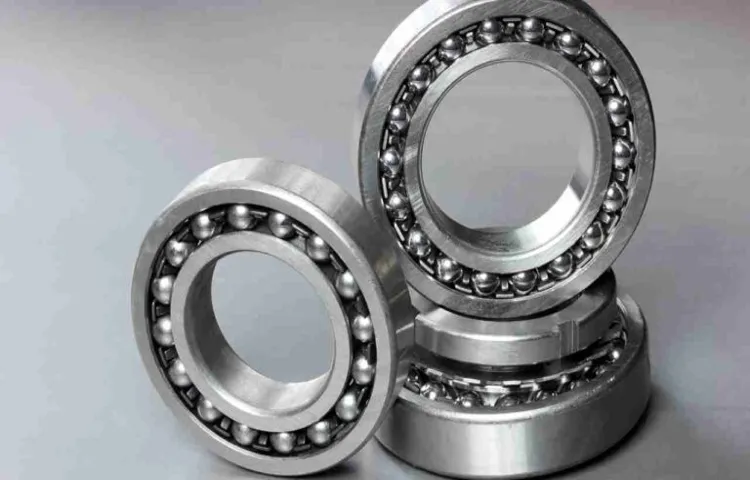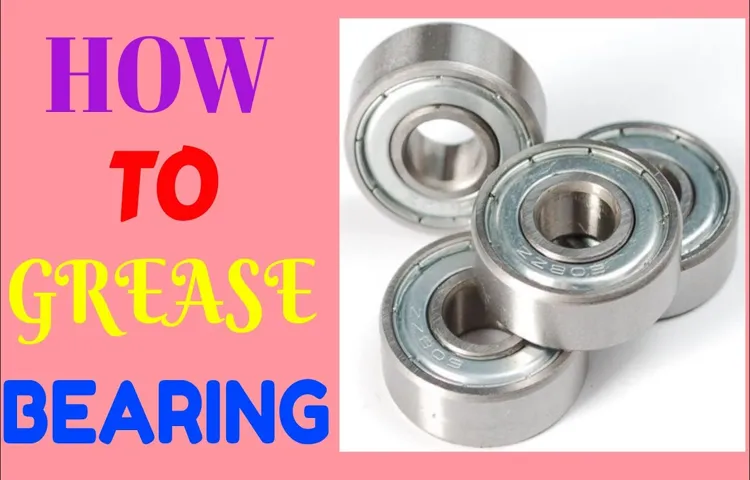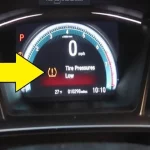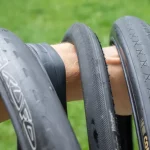Maintaining your pump’s bearings is an essential part of ensuring optimal performance and prolonging the life of your pump. Pump bearings are typically made of stainless steel and are lubricated to reduce friction. However, over time, the lubricant can wear off, which can lead to overheating and premature failure of the bearings.
Fortunately, greasing your pump bearings is a simple process that anyone can do with the right tools and a bit of know-how. In this article, we’ll show you how to grease a pump bearing so that you can keep your pump running smoothly and efficiently. Whether you are a seasoned professional or a DIY enthusiast, you’ll learn everything you need to know to get the job done right.
So, let’s dive in and get your pump back to its best performance!
Table of Contents
Introduction: What is a Pump Bearing?
If you own or operate machinery that involves a pump, it’s important to know how to grease a pump bearing. Simply put, a pump bearing is a component that helps the pump to run smoothly and efficiently. Pump bearings reduce friction, vibration, and noise while also providing support for the rotating shaft.
Over time, however, pump bearings can wear down or become damaged. Properly greasing the pump bearings on a regular basis can help prevent this from happening. When you grease a pump bearing, you apply a lubricant to the bearing’s moving parts to keep them from rubbing against each other and to prevent metal-to-metal contact.
This helps to prevent wear and damage and prolongs the life of the pump. By learning how to grease a pump bearing, you can keep your machinery running smoothly and avoid costly repairs in the long run.
Definition and Function of Pump Bearings
A pump bearing is an essential component of a pump system that supports a rotating shaft. It comprises two parts, the inner and outer rings, which can either be ball or roller bearings or plain bearings with lubrication. The bearing’s function is to reduce friction between the shaft and the pump’s stationary components, preventing wear and tear.
Pump bearings are designed to withstand heavy loads and high speeds, making them crucial to the pump’s overall performance. Without them, the pump’s moving parts would wear out quickly, leading to costly repairs and downtime. Overall, the pump bearing provides a stable support system for the pump shaft while reducing friction to ensure smooth and efficient operation.

Why Grease a Pump Bearing?
A pump bearing is an essential component of a pump system that allows axial and radial movement while reducing friction and wear. Greasing a pump bearing is an important maintenance task that ensures the longevity of the bearing and the pump system. The purpose of grease is to provide lubrication and prevent metal-to-metal contact, which can lead to significant damage.
Without proper greasing, the bearing can overheat and seize, leading to costly repairs and downtime. It is essential to choose the correct grease for the pump bearing, as using the wrong type can result in premature wear or failure. Regular greasing of the pump bearing can help extend the life of the bearing, improve overall pump performance, and reduce maintenance costs.
As the saying goes, a little grease goes a long way in keeping your pump system running smoothly.
Step by Step Guide to Grease a Pump Bearing
If you’re looking to prolong the lifespan of your pump bearing, regular greasing is essential. The process may seem daunting if you’re new to it, but it’s relatively straightforward. Firstly, ensure that your pump is turned off and disconnected from its power source to avoid any accidents.
Next, remove the pump housing and inspect the bearings for wear and damage. Then, gently remove the old grease from the bearing using a soft brush or cloth. Once the old grease has been removed, apply a small amount of new grease evenly onto the bearings.
Remember to only use the recommended type and amount of grease. Lastly, reassemble the pump housing and reconnect the power source. With a well-greased pump bearing, you can expect better performance and longevity from your pump.
Preparation
When it comes to pumping bearings, it’s important to properly prepare before you start. This means gathering all of the necessary tools, such as a grease gun, cleaning rags, and the appropriate type of grease. You’ll also want to ensure that the pump is turned off and cooled down before attempting to grease the bearings.
It’s also a good idea to wear gloves to prevent any grease from getting on your hands. Lastly, make sure to refer to the manufacturer’s guidelines for specific instructions and recommended grease intervals. By following these steps, you’ll be well on your way to greasing your pump bearings safely and effectively.
Selecting the Right Grease
When it comes to maintaining a pump bearing, choosing the right grease can make all the difference in ensuring that your equipment stays in top shape. There are a few factors to consider when selecting a grease, such as the operating temperature range, load capacity, and compatibility with the materials in the pump. Once you’ve chosen the appropriate grease, the next step is to prepare the bearing for lubrication.
This involves cleaning the old grease from the bearing, inspecting it for any damage, and applying fresh grease evenly to the rolling elements in the bearing. It’s important to avoid over-greasing, as this can lead to increased friction and heat buildup, ultimately shortening the lifespan of the bearing. By following these simple steps, you can extend the life of your pump and ensure its reliability for years to come.
Locate the Grease Fitting
When it comes to maintaining and prolonging the lifespan of your pump bearing, greasing it regularly is a must. But before you start slathering grease all over the parts, you first need to locate the grease fitting. This small but essential component is where the grease will be inserted into the pump bearing.
To find the grease fitting, you can refer to the pump bearing’s manual or instruction guide. It usually has a diagram or illustration that indicates the location of the fitting. If you don’t have access to the manual, you can also look for a small indentation or pinhole on the bearing.
Once you’ve found it, insert the nozzle of the grease gun and apply the appropriate amount of grease. Over-greasing can also cause damage, so be careful not to exceed the recommended amount. Remember that pumping fresh grease into the bearing can push out the old grease and any contaminants that may be causing friction and abrasion.
So if you hear any unusual sounds or feel any vibration when the pump is running, it may be time to grease the bearing. Making the effort to grease the pump bearing regularly can save you from costly repairs, improve efficiency, and keep your machine running smoothly.
Clean the Grease Fitting
When it comes to maintaining your pump bearings, one of the most important steps is to properly grease them. This process involves cleaning the grease fitting and applying fresh grease to ensure smooth and efficient operation. To get started, you’ll first need to locate the grease fitting, which is typically located on the side of the bearing housing.
Once you’ve found it, use a clean cloth or rag to wipe away any dirt or debris that may have accumulated around the fitting. Next, insert the tip of the grease gun into the fitting and slowly pump in fresh grease until you see it start to overflow. Be sure to use the recommended type and quantity of grease for your specific application, as using the wrong type or too much grease can lead to damage or failure.
Repeat this process every few months or as recommended by the manufacturer to keep your pump bearings running smoothly for years to come.
Attach the Grease Gun
Grease Gun When it comes to maintaining the health of your pump bearing, proper greasing is crucial. One of the key tools you will need to grease your pump bearing is a grease gun. Before you begin, make sure the pump is not running and is cool to the touch.
Once you have confirmed this, you can attach the grease gun to the zerk fitting on the bearing housing. Be sure to align the tip of the grease gun with the fitting and apply steady pressure while pumping the grease into the bearing. While you are greasing the pump bearing, be sure to keep an eye on the pressure gauge on the grease gun.
This will give you an indication of how much grease you are pumping into the bearing and when it is time to stop. Over-greasing the pump can cause damage, so it is important to exercise caution and only use as much grease as necessary. By following these simple steps and using your trusty grease gun, you can keep your pump bearing in good working order for years to come.
Pump Grease into the Fitting
When it comes to maintaining the health and longevity of a pump bearing, greasing it is crucial. Grease acts as a lubricant that reduces friction between the moving parts of the bearing, preventing damage caused by wear and tear. The first step in properly greasing a pump bearing is to pump grease into the fitting.
This can be done using a grease gun. Simply attach the nozzle of the grease gun onto the fitting and pump the grease in slowly and steadily. It is important not to over-grease the bearing, as this can cause unnecessary build-up and create more problems in the long run.
Once done, wipe off any excess grease and move on to the next step. By regularly greasing your pump bearing, you can ensure that your pump continues to operate smoothly and efficiently, reducing the risk of breakdowns and saving you money in the long run.
How Often to Grease a Pump Bearing?
If you own a pump with bearings, it’s important to know how often you’ll need to grease them to ensure the longevity and efficiency of your pump. Generally, bearings should be greased every six months to a year, depending on usage and operating conditions. However, it’s important to note that some pumps may require more frequent greasing, especially if they are used in high temperature or high humidity environments.
If you’re not sure how often to grease your pump bearings, be sure to consult the manufacturer’s guidelines or consult with a qualified technician. Neglecting to grease your pump bearings can lead to increased friction and wear, decreased efficiency, and even complete failure of your pump. So, don’t forget to schedule regular greasing sessions to keep your pump running smoothly!
Factors that Affect Grease Intervals
When it comes to machinery maintenance, it is crucial to know the right grease intervals for a pump bearing. Several factors determine how often you should grease your pump, including the type of bearing, the load it undergoes, and its environment. Generally, the more heavy-duty the application, the more frequently the pump bearing will require greasing.
Bearings exposed to extreme temperatures, high humidity, and harsh chemicals will also demand more frequent grease intervals. On the other hand, less demanding environments can allow for longer intervals between greasing. It is essential to keep in mind that lubrication under-greasing or over-greasing can lead to premature bearing failure, which can result in costly repairs and even machinery downtime.
Therefore, always consult with the manufacturer’s guidelines and regularly inspect the grease to ensure optimal machinery performance.
Recommended Grease Intervals for Pump Bearings
Pump bearing grease intervals When it comes to maintaining pump bearings, one of the most critical factors is ensuring they are adequately lubricated. Greasing is essential to keep the bearings running correctly, reducing wear and tear, and ultimately extending their lifespan. However, the question on every maintenance technician’s mind is how often to grease a pump bearing? The recommended greasing interval for pump bearings depends on several factors, including the type of bearing, the load it carries, and the operating temperature.
Generally, bearings should be greased every three to six months, depending on usage. High-load applications or those in harsh conditions may require more frequent greasing. Conversely, pumps used infrequently or in low-load scenarios may need less frequent greasing.
Ultimately, following the manufacturer’s guidelines, testing bearings regularly, and visually inspecting them for signs of wear can help determine the ideal greasing interval.
Conclusion: Importance of Proper Pump Bearing Greasing
In conclusion, greasing a pump bearing is a lot like cooking a gourmet meal – it requires the right ingredients, tools, and of course, a little bit of know-how. But with a steady hand and a commitment to getting the job done right, you’ll be enjoying smooth pump performance and operational reliability for years to come. So remember, when it comes to greasing your pump bearing, don’t just “set it and forget it” – take the time to do it right and your equipment (and taste buds) will thank you!”
FAQs
What is the purpose of greasing a pump bearing?
The purpose of greasing a pump bearing is to lubricate the moving parts of the bearing and reduce friction, which helps to prevent premature wear and failure of the bearing.
How often should you grease a pump bearing?
The frequency of greasing a pump bearing depends on the specific requirements of the bearing and how often the pump is used. Generally, it is recommended to grease a pump bearing at least once every six months or more frequently if the pump is in heavy use.
Can you over-grease a pump bearing?
Yes, over-greasing a pump bearing can be as harmful as under-greasing it. Over-greasing can cause excessive heat and create resistance to the movement of the bearing, which leads to premature wear and failure.
What type of grease should be used for pump bearings?
The type of grease used for pump bearings depends on the manufacturer’s recommendations and the specific requirements of the bearing. Generally, a high-quality lithium-based or synthetic grease is recommended.
How do you know when a pump bearing needs to be greased?
The signs that a pump bearing needs to be greased include unusual noises coming from the pump, increased friction or resistance, and a decrease in the pump’s overall performance. Regular inspections and maintenance of the pump can also help to identify when the bearing needs to be greased.
What are the risks of not greasing a pump bearing?
The risks of not greasing a pump bearing include premature wear and damage to the bearing, reduced pump performance and efficiency, and increased repair and maintenance costs.
Can you lubricate a pump bearing with oil instead of grease?
In some cases, it may be possible to lubricate a pump bearing with oil instead of grease. However, this depends on the specific requirements of the bearing and the manufacturer’s recommendations. It is also important to note that oil may not provide the same level of protection against wear and friction as grease.



